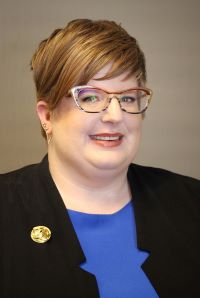#EmbraceEquity
Contribution by Shannon Bolger, CRSP
We’re coming up to International Women’s Day on March 8th, and this year their theme is #EmbraceEquity, including discussing the importance of understanding gender equity and the differences between equity and equality.
Many safety professionals are starting to see equity, diversity, and inclusion added to their portfolios, so now is the time to learn about these topics if you need to brush up on them. This includes understanding the role of the safety professional when it comes to diversity and inclusion, psychological safety and mental health initiatives, and the overlap of responsibilities that we are undertaking with other disciplines within our organizations.
I’ve seen many changes to safety responsibilities in the past two decades and this is one that I wholeheartedly welcome. I’m fortunate that my way into the safety profession was helped by my dad, Dennis Bolger, who attained his CRSP many years before I did. Having a permanent supporter that’s always in my corner has helped to soften any blows I’ve faced when it comes to gender inequality in the workplace. He gave me a foot in the door to finding a network of my own and he taught me the importance of knowing both yourself and your audience in every interaction. I feel this is incredibly important when we talk about equity and equality. You need to know what you are bringing to the table, and what possible approaches you may need to take depending on the situation and the other person you may be facing. Whether that’s a boss, a coworker or a friend. Allies are incredibly important, and not everyone we work with or interact with is going to feel the same way we do regarding equity and the importance of it.
I realize that not every safety professional out there has a built-in mentor and coach, so what can you do to put yourself in a space that is inclusive and diverse? I wanted to share the learnings I’ve fostered over the 22 years I’ve spent in safety. It may not be the best way for everyone. But it’s what has worked for me.
Find a mentor. It can be difficult when you’re starting out to find mentorship opportunities, especially when you consider the time commitment can be onerous for a lot of people. However, if we expand how we view mentorship it opens up more avenues, such as micro mentoring. Who in your network is willing to meet for coffee to help you troubleshoot a specific problem? One of the great benefits of this virtual world is that we can have a quick zoom meeting with someone with the click of a button.
Ensure your values align with your organization. Champions or sponsors are key to help you reach your full potential. If you don’t have a champion in your organization, you may need to look elsewhere, whether that’s another company or possibly a volunteer organization.
Foster a community that represents what you feel is important. Volunteering is a cornerstone of my approach to building a community of support. I’ve volunteered on multiple committees within the BCRSP over the past decade and I’ve been fortunate that I’ve learned from and been mentored by many of my CRSP colleagues from different industries and provinces. I’m also a founder, and the current Chair, of the Women in Occupational Health & Safety Society (WOHSS), and am incredibly proud of the work we’ve done to bring educational opportunities, informal networking sessions, mentorship opportunities and other avenues to women, men and our non-binary colleagues in safety.
Identify appropriate groups for networking opportunities. I’ve belonged to many safety organizations over the years, including WOHSS and the Canadian Society of Safety Engineering (CSSE). When I first started in safety I would regularly attend the Calgary CSSE Lunch and Learns with my dad and while the topics that were introduced then were invaluable to me, so was the opportunity to talk to safety colleagues and start to build my own network.
Educate yourself. I see myself as a life-long learner and I constantly look for ways to inform myself on topics I’m unfamiliar with. This could be through formal university courses or programs, or through the assortment of workshops, seminars, conferences and courses that are available. An upcoming conference that I’ll be attending is the Women in Safety Summit, on March 9th. It will be a full day of industry presentations, panel discussions, expert speakers, and interactive virtual networking, so I encourage everyone to consider attending.
When we identify allies, find communities that align with our values, and start building those necessary networks where we can discuss and promote diversity and inclusion, we’re more likely to put a face to equity and normalize these conversations. We can do more together than we can by ourselves.


